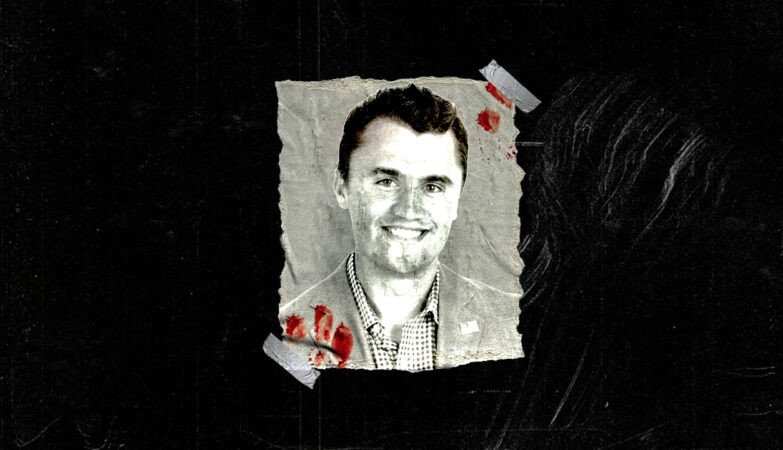Until 10 years ago, Meryl Baumann was healthy, active, and fun-loving. While she remains active and fun-loving, the 78-year-old retired school administrator no longer counts good health among the many positives in her life.
During the spring of 2010, Baumann experienced weeks of abdominal bloating and discomfort. When those symptoms subsided, she put them out of her mind and busied herself planning the annual trip she and her husband took from Florida to Maine to spend the summer with her son and his family.
Two months later, that uncomfortable feeling returned, this time accompanied by vaginal bleeding, an indication that something was very wrong. “I told my son, who’s a physician, and he said, ‘Mom, you need to see a doctor right away!’” Within a few days, Baumann was at the local hospital undergoing exams and tests.
A cancer antigen (CA) 125 blood test didn’t find elevated levels of the biomarker protein that sometimes indicates the presence of tumor cells. Doctors ruled out cancer and posited that the problem was that her fallopian tubes were tangled. Surgeons removed them laparoscopically (using a minimally invasive surgical procedure done through a small incision), along with her ovaries.
Baumann’s relief that the worst was over proved premature. Less than a week after the surgery, a biopsy contradicted the original findings and revealed that she had fallopian tube cancer, an extremely rare type of ovarian cancer diagnosed in approximately 300 to 400 women in the United States per year, according to University of California San Francisco Health. “I was like, holy crap! I thought I was finished with this stuff,” Baumann says. The cancer was advanced, stage 3. “I thought for sure I was a goner,” she says.
Yet 10 years later she’s still playing golf, traveling, and seeing friends and family — positives that continue to amaze.
‘Keeping Women Going’ for 5, 10, 15, 20 Years
Treated early, before it has spread, ovarian cancer has a five-year relative survival rate of 92 percent or higher; for fallopian tube cancer, it’s 94 percent. These numbers mean that more than 9 in 10 women are still alive five years after diagnosis, according to the American Cancer Society (ACS).
But the vagueness of symptoms like abdominal bloating, which can be easy to ignore or blame on other maladies, often leads to delays in treatment. Like Baumann, about 75 percent of women with ovarian cancer are diagnosed at stage 3 or 4, when the cancer has already advanced and the odds of a good outcome are lower. The five-year relative survival rate for all stages of epithelial ovarian cancer, by far the most prevalent kind, is only 47 percent, estimates the ACS; for fallopian tube cancer, it’s 59 percent.
Still, a growing number of women like Baumann are living longer with ovarian cancer. Beth Karlan, MD, professor of obstetrics and gynecology at UCLA’s David Geffen School of Medicine in Los Angeles, believes the disease once known as the silent killer could become a chronic condition for many women in the not-too-distant future, as significant advances in research and new therapies continue to emerge.
“We do have a number of different treatments that can keep women going for 5, 10, 15, 20 years,” says Dr. Karlan. These include immunotherapy (which harnesses the power of the body’s own immune system to fight disease) and anti-angiogenesis therapies (which block the growth of blood vessels that cancer cells need to live and grow), as well as newer and better intravenous chemotherapies to kill cancer cells; targeted therapies that lock in on cancer cells without harming normal ones; and combination treatment regimes.
Baumann estimates she’s been through almost all of these new approaches over the past decade. “My son said to me, ‘Mom, you’re way past your expiration date!’ I told him, ‘I hope you don’t talk to your patients that way.” She knows that most women with her diagnosis would consider themselves lucky to be in her shoes.
Living Life Past Her Expiration Date
Surgery remains the first line treatment for most women with ovarian cancer. Once Baumann’s cancer was confirmed, she was readmitted to the hospital, where doctors performed a hysterectomy and removed as much of the cancerous tissue as possible, a procedure called debulking. Following a slow, painful recovery, Baumann began chemotherapy to target the cancer cells and tissues left behind. “I told them ‘Give me the worst one you have because I want this stuff out of me!’” Baumann recalls. “Boy, was it rough! My hair came out right away.”
Despite the many side effects, the treatment stabilized Baumann and kept the cancer at bay for more than a year. Then she became one of the 70 percent of ovarian cancer patients that the Ovarian Cancer Research Alliance estimates will face a recurrence.
During Baumann’s years of facing off against ovarian cancer, a treatment pattern emerged. Regardless of the regime, it took about 12 to 18 months for her cancer to become unresponsive to the latest wonder drug, leaving her doctors to scramble for another potent pharmaceutical cocktail to slow the disease’s progression.
Baumann has been prescribed Avastin (bevacizumab), a targeted therapy used in conjunction with standard chemotherapy because it has been shown to increase the average amount of time before a recurrence. She’s also taken Zejula (niraparib), a medication belonging to a new class of drugs called PARP (poly ADP ribose polymerase) inhibitors that have been shown to slow disease progression and increase the time between courses of chemotherapy when cancer returns. PARP inhibitors work by blocking the PARP enzyme’s ability to help repair damaged DNA, causing cancer cells to die. “In the past 10 years, I’ve had 10 different chemotherapies, sometimes in combination with another drug,” Baumann says.
Still Checking Items Off Her Bucket List
The ever-changing string of drug therapies has allowed Baumann to check items off her bucket list and maintain an active schedule of travel, mahjong, and time with friends. She took up golf after retirement and, dressed in one of her signature wigs or baseball caps, tries to hit the links two or three times a week. “I hate to toot my own horn but I’ve won the President’s Cup tournament five times,” she says. “Obviously, I’m not playing at that level anymore but I’m still president of the Ladies Golf League.”
In March 2020, Baumann began yet another regime. Every third week, she receives Alimta (pemetrexed) intravenous chemotherapy (a medication initially approved for lung cancer that has recently shown promise in treating ovarian cancer), followed by an Avastin injection. The treatment is harsh and the side effects last a week. Her most recent PET scan showed the cancer in her stomach and liver and her last CA 125 blood test was around 800 — not an encouraging number. She wonders how long she will stay on this regime since it doesn’t appear to be working.
Nonetheless, Baumann remains in remarkably good spirits and refuses to “sit here and feel sorry for myself,” she says. She is not living cancer-free and knows she probably won’t ever go into remission. But the treatments are keeping her alive until researchers come up with the next miracle drug that she hopes will extend her expiration date. For her, ovarian cancer is a disease she’s learned to live with, not one she’s waiting to die from.
More Survivors
Adora Rodriguez
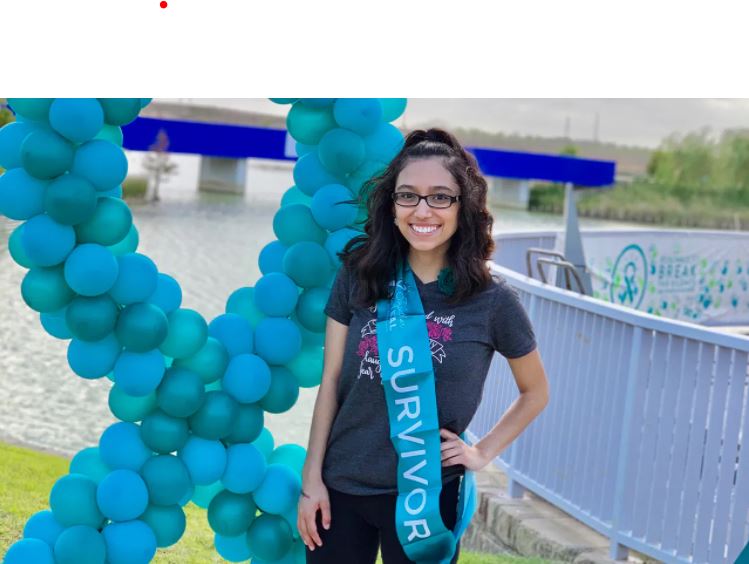
Adora Rodriguez was only 16 years old when she developed a feeling of heaviness in her lower abdomen, along with severe bloating.
“I was like, ‘Mom, something isn’t right,’” Adora recalled. “My mom literally described it as, I ‘looked pregnant.’”
The feeling of heaviness in her belly was causing back pain and making it hard to sleep.
So, she went with her mother to an urgent care clinic, where healthcare providers ordered a pregnancy test. When it came back negative, they ordered an ultrasound exam.
“All they said was, it could possibly be severe constipation,” Adora told Healthline.
After multiple tests and scans, Adora learned that she had a mass in her abdomen.
A surgeon removed the mass later that week, along with Adora’s right ovary and fallopian tube. Biopsies revealed it was a form of germ-cell ovarian cancer, known as dysgerminoma.
Adora is now 20 years old and studying to become a pediatric oncology nurse. In some ways, she was lucky: The cancer was found and removed early when it was still at stage 1, before it could spread to other organs.
“My surgeon and my oncology doctor both told me, ‘If you waited, maybe a week later, it’s possible it would have spread,’” Adora said.
Early diagnosis saves lives
Early diagnosis and treatment are essential for increasing the chances of survival in people with ovarian cancer.
Among those who get a diagnosis at an early stage, the American Cancer Society reports that about 94 percent live for more than 5 years after diagnosis.

In those who receive a diagnosis after the cancer has spread, the survival rates are much lower.
But only around 20 percent of ovarian cancers are detected at an early stage. Most people who develop ovarian cancer don’t learn they have it until after it’s already spread.
That’s because the symptoms of ovarian cancer are often very subtle and easy to miss.
The symptoms are also similar to those of other conditions, raising the risk of misdiagnosis.
We talked to four women who have been diagnosed with ovarian cancer to learn more about their diagnosis experiences and what advice they have for others.
Know the symptoms
According to Mariangela DiPietri, a 73-year-old ovarian cancer survivor, mother of three, and grandmother of 10, learning about the symptoms of ovarian cancer may prove lifesaving.
“I have been retired from my job at Stanley Foods as a service representative for 7 years now,” Mariangela told Healthline, “but I remember the day I was at a client restaurant during an appointment, when the excruciating pain in my abdomen got so bad I could hardly ask for a glass of water.”
After multiple hospital visits and an initial misdiagnosis, Mariangela learned she had masses on both ovaries. Those masses turned out to be stage 1 ovarian cancer.
Two months before then, Mariangela had attended a wellness conference with her daughter where she learned about ovarian cancer for the first time from women who had survived it.
“I’m forever thankful for the day I attended the wellness event,” Mariangela said. “I can’t stress enough the fact that awareness of symptoms of ovarian cancer and early diagnosis saved my life.”
Looking back, Mariangela realizes that she had been living with subtle symptoms of the disease for some time — including fatigue, bloating, back pain, and bladder fullness.
Other potential symptoms of ovarian cancer include:
- nausea
- belly pain
- abdominal swelling
- feelings of fullness
- trouble eating
- constipation
- pain during sex
- irregular periods
Epithelial Ovarian Cancer

Heather M., Epithelial Ovarian Cancer, Stage 2
Cancer Details: Also diagnosed w/uterine cancer 1A same time.
1st Symptoms: Extreme bloating, pinching pain in right side of abdomen, extreme fatigue
Treatment: Surgery (total hysterectomy), chemo (Taxol once a week for 18 week, Carboplatin every 3 weeks), concurrent clinical trial (Avastin) every 3 weeks

Jodi S., Epithelial Ovarian Cancer, Stage 4 (IV)
Cancer Details: Metastatic
1st Symptoms: Extreme bloating, extremely tight skin, changes in digestive tract, significant pelvic pain, sharp-shooting pains down inner thighs, extreme fatigue
Treatment: 4 rounds of chemotherapy, hysterectomy, 3 rounds of additional chemotherapy
Low-Grade Serous
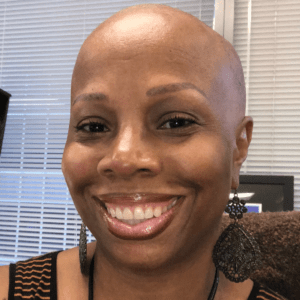
Maurissa M., Low-Grade Serous Ovarian Cancer
Cancer details: Makes up approximately 10% of cases of serous ovarian cancer
1st Symptoms: Pressure on bladder, throbbing pain, could feel growth on right side of abdominal area
Treatment: 5 surgeries (official diagnosis after 3rd)
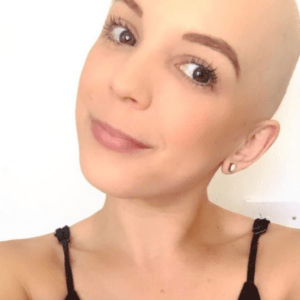
Alisa M., Low-Grade Serous Ovarian Cancer
Cancer details: Makes up approximately 10% of cases of serous ovarian cancer
1st Symptoms: Occasional rectal pain, acid reflux, bloating, night sweats
Treatment: Debulking surgies, chemotherapy, immunotherapy
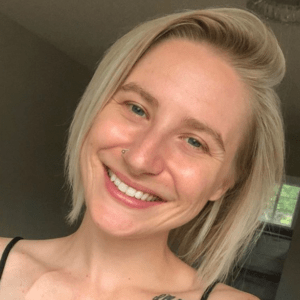
Cheyann S., Low-Grade Serous Carcinoma, Stage 4B
Cancer details: Makes up approximately 10% of cases of serous ovarian cancer.
1st Symptoms: Stomach pain, constipation, lump on right side above pubic area
Treatments: Cancer debulking surgery, chemotherapy (Carboplatin & Taxol, then Doxil & Avastin)
High-Grade Serous

Randalynn V., High-Grade, Stage 1C
Cancer details: Account for up to 70% of cases
1st Symptoms: Pulling sensation when emptying bladder; abdominal pain
Treatment: Chemotherapy (Carboplatin & Paclitaxel) & surgery

Shirley P., High-Grade Serous Carcinoma, Stage 3C, BRCA1+
Cancer details: Account for up to 70% of cases
1st Symptoms: Pulling sensation when emptying bladder; abdominal pain
Treatment: Chemotherapy (Carboplatin & Taxol), de-bulking surgery & PARP inhibitors

Suzann B., High-Grade Serous Carcinoma, Stage 3C, BRCA1+
Cancer details: Account for up to 70% of cases
1st Symptoms: Inability to urinate
Treatment: Chemotherapy, de-bulking surgery & total hysterectomy
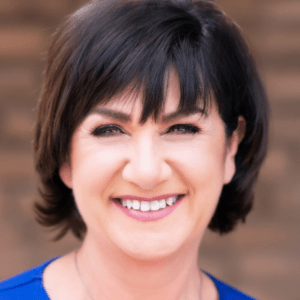
Susan R., High-Grade, Metastatic
Cancer details: Account for up to 70% of cases
1st Symptoms: Pulling sensation when emptying bladder; abdominal pain
Treatment: Chemotherapy (Carboplatin & Paclitaxel) & surgery
Clear-Cell
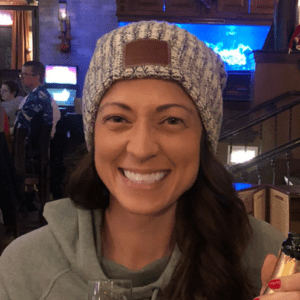
Cancer details: Account for ~ 5-10% of ovarian cancer cases
1st Symptoms: Random sharp pains, unrelated scan showed ovarian cyst
Treatment: Debulking surgery, chemotherapy (carboplatin & paclitaxel/Taxol), clinical trial of PARP inhibitors
Germ Cell Tumors

Gautami M., Germ Cell, Stage 3B
Cancer details:Pediatric case, diagnosed at 13
1st Symptoms:Swollen abdomen
Treatment: Surgery (to remove cyst and ovary), chemotherapy (Bleomycin, Carboplatin)
And here are 5 famous women who battled ovarian cancer to come out victorious!
Brandi Maxiell

Best known for her role on the reality TV show Basketball Wives: LA, she was diagnosed with ovarian cancer at the age of 24. Having no family history of cancer, Brandi was beyond shocked by the news, undergoing weeks of chemotherapy as treatment. Brandi credits her cancer for a positive life change.
Kathy Bates
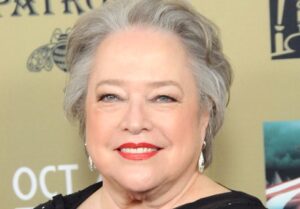
While it’s hard enough to battle cancer with the support of everyone you know, it’s even more difficult when you’re a Hollywood star and must keep your diagnosis a secret. Kathy Bates, an actress, 64, fought ovarian cancer in 2003 and managed to keep it under wraps until 2009. Now, in remission for 10 years, she has been busier than ever!
Manisha Koirala

Manisha Koirala was diagnosed with ovarian cancer in the year 2012 and has now recovered, says there is always a fear the disease may recur but she believes in being positive in life. She confessed to not paying attention to her health. In remission now, the actress plans to do something for those suffering from the disease.
Cobie Smulders

The 33-year-old actress revealed she was diagnosed with the disease during the third season of How I Met Your Mother when she was only 25. Cobie confessed that she doesn’t believe that she would ever be cancer-free. She has been in remission for 5 years now and she plans to see the positive side of things and learning from it. She has also tried to create awareness for it.
Diem Brown

Diagnosed with ovarian cancer at age 25, the former MTV reality star had an ovary and fallopian tube removed. Then, in 2012, the cancer came back, and Brown went through another round of treatment. Now 32 and cancer-free, Brown says the aftermath of her public fight still follows her wherever she goes.
Never give up
I think Brandi Maxiell said it best. After her life-changing diagnosis in 2007, Brandi, now 37, admits she braced herself for the worst.
“When I thought of cancer, I thought it was a death sentence…I just felt like my life was over,” she explained.
But after she came to terms with the sickness and had surgery, her relationship with God made her stronger.
“I think me having cancer brought me closer to God because I think I was kind of losing my way a little bit,” she shares.
Though it was a heartbreaking time for her fiancé as well, he was there with her every step of the way.
“He visited me every week in Dallas [she was there during treatement]…he shaved his hair off and I was like, ‘Oh my gosh!’ Those are like the moments I remember,” she says.
Now Brandi hopes to bring awareness to ovarian cancer – which is one of the main reasons she wanted to appear on Basketball Wives.
And though her friend Malaysia Pargo has been fully supportive of her and welcomed her with open arms, she hasn’t experienced the same type of treatment from the other women.
“The downside of the show is dealing with these catty women. I didn’t like that because it brought me down occasionally to their level.
“I know on a reality show like you have to have drama, you have to have something to keep it interesting, but this was a struggle to just deal with how to balance it all—try to tell my story and then deal with bitter women. It was a struggle and my life is so much more important to me.”
As well as working on the show, Brandi aims to give her two-year-old son Jason a brother or sister.
That doesn’t come without reservations, though.
“I’m very scared about it because it comes with a risk and that’s scary. I have to go through so much IVF, all the needles and the medications I have to take,” she explains.
“It’s so overwhelming, so I have to come to terms with that.”
- https://www.thepatientstory.com/cancers/ovarian/
- https://www.everydayhealth.com/ovarian-cancer/ovarian-cancer-survivor-stories/
- https://www.healthline.com/health/ovarian-cancer/ovarian-cancer-survivors-awareness-stories
- The New Right vs. the New Left - December 10, 2025
- Why the 11th Amendment Needs to Be Revoked - December 9, 2025
- When Will the AI Ponzi Scheme End? - December 8, 2025







